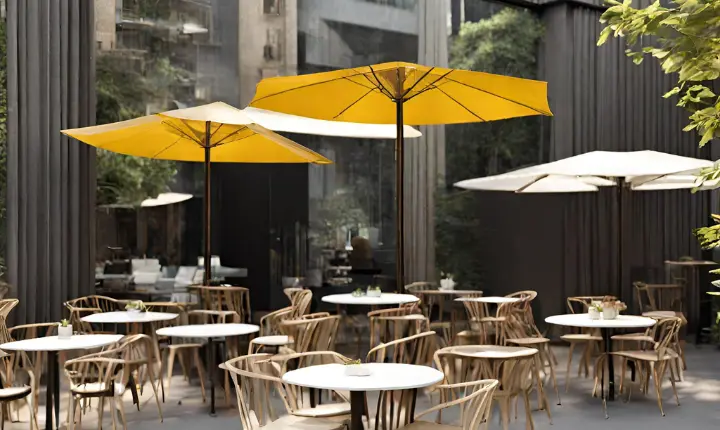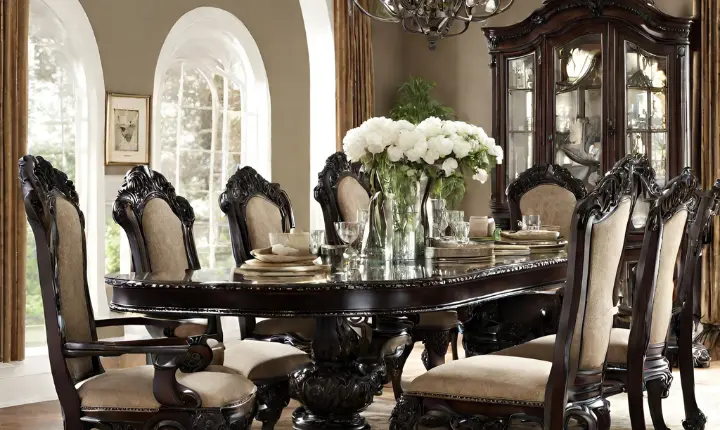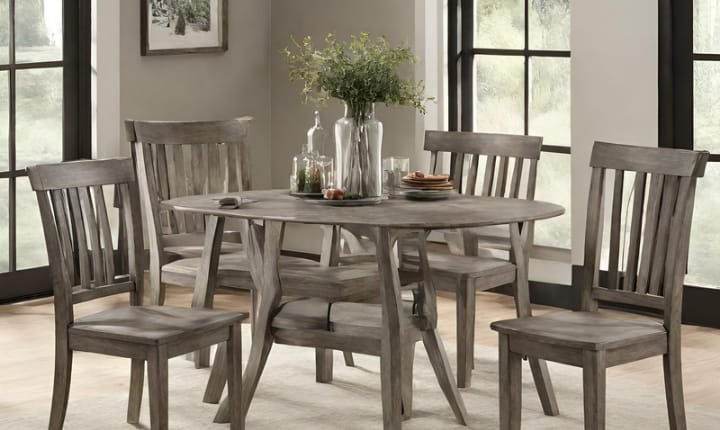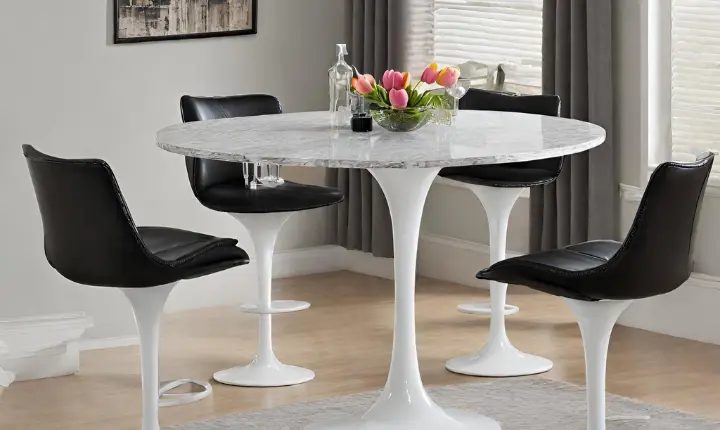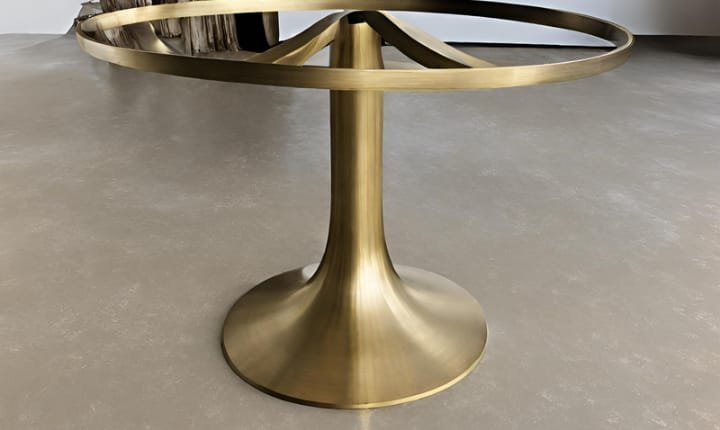World Market Tulip Table
In the realm of furniture design, certain pieces stand out as timeless icons that transcend trends and endure through generations. Among these, the Tulip Table holds a special place, captivating the world with its elegant form and versatile functionality. Originating in the mid-20th century, the Tulip Table has become a symbol of modern design, and…
In the realm of furniture design, certain pieces stand out as timeless icons that transcend trends and endure through generations. Among these, the Tulip Table holds a special place, captivating the world with its elegant form and versatile functionality. Originating in the mid-20th century, the Tulip Table has become a symbol of modern design, and its popularity continues to flourish on the global stage.
The Birth of a Design Classic
Designed by Finnish-American architect and designer Eero Saarinen in 1956, the Tulip Table was created as part of the Pedestal Collection. Saarinen sought to eliminate the “slum of legs” that traditional tables possessed, envisioning a single pedestal to support the table’s top. The result was a sleek and minimalist design that not only revolutionized the look of tables but also established a new paradigm for modern furniture.
Global Appeal and Versatility
One of the key factors contributing to the Tulip Table’s global success is its exceptional versatility. The table’s simple, organic silhouette effortlessly complements various design styles, from mid-century modern to contemporary and eclectic interiors. Its clean lines and absence of traditional legs create an illusion of space, making it particularly appealing for smaller living spaces.
Moreover, the Tulip Table is available in various sizes, allowing it to serve as a coffee table, dining table, or even a conference table, depending on the needs of the user. The adaptability of this iconic piece has made it a sought-after choice for both residential and commercial spaces worldwide.
Materials and Craftsmanship
Crafted with meticulous attention to detail, the Tulip Table is available in a range of materials to suit different preferences and environments. The tabletop is often made from marble, wood, or laminate, while the base is commonly constructed from cast aluminum. These quality materials not only contribute to the table’s aesthetic appeal but also ensure durability and longevity.
The Use of Marble
Marble, in particular, has become synonymous with the Tulip Table. The luxurious and timeless beauty of marble adds a touch of sophistication to any space. Various types of marble, such as Carrara and Arabescato, are used, each providing a unique visual character. The combination of the Tulip Table’s modern design and the classic allure of marble has made it a statement piece in upscale interiors worldwide.
Popularity in Interior Design
The Tulip Table’s enduring popularity can be attributed to its seamless integration into contemporary interior design. Interior designers and homeowners alike appreciate its ability to serve as a focal point or a subtle complement, depending on the context. Its popularity has surged through social media platforms, with influencers showcasing how the Tulip Table effortlessly elevates the aesthetics of diverse living spaces.
Pros
- Timeless Design: The Tulip Table boasts a timeless and iconic design that has endured for decades. Its clean lines and minimalist silhouette make it a versatile piece that can seamlessly fit into various design styles.
- Versatility: Available in different sizes and materials, the Tulip Table is incredibly versatile. It can serve as a coffee table, dining table, or even a conference table, adapting to different spaces and purposes.
- Space-Saving: The absence of traditional legs and the single pedestal design create an open and uncluttered look, making it an excellent choice for smaller living spaces where maximizing space is crucial.
- Luxurious Materials: The use of high-quality materials such as marble, wood, and aluminum contributes to the table’s aesthetic appeal. Marble, in particular, adds a touch of luxury and sophistication to any space.
- Global Popularity: The Tulip Table has achieved global popularity, making it a recognizable and coveted piece of furniture in homes, offices, and commercial spaces around the world.
Cons
- Price: Authentic Tulip Tables, especially those made with high-quality materials like marble, can be relatively expensive. While replicas are available at lower costs, they may not match the quality and craftsmanship of the original design.
- Weight: Tables with marble tops, in particular, can be quite heavy. This might be a consideration when it comes to moving or rearranging furniture.
- Susceptibility to Scratches: Depending on the material of the tabletop, the Tulip Table may be susceptible to scratches, especially if the surface is not properly cared for. It’s essential to follow care instructions to maintain its appearance.
- Authenticity Concerns: With the popularity of the Tulip Table, there is a market for replicas and variations. Some buyers may encounter authenticity concerns, and it’s important to purchase from reputable sources to ensure the quality and original design.
- Limited Seating Configuration: The single pedestal design may limit the seating configuration, as users may need to consider the pedestal’s placement in relation to chairs. This is especially relevant for larger dining tables.
FAQs
Q1: Who designed the Tulip Table?
A: The Tulip Table was designed by Finnish-American architect and designer Eero Saarinen in 1956. It is part of his Pedestal Collection, where he aimed to create a table without the traditional clutter of legs.
Q2: What materials are commonly used for the Tulip Table?
A: The Tulip Table is typically made with a variety of materials. The tabletop can be crafted from marble, wood, or laminate, while the base is commonly constructed from cast aluminum. Marble, in particular, is a popular choice for its luxurious and timeless appeal.
Q3: What sizes are available for the Tulip Table?
A: The Tulip Table comes in various sizes to accommodate different needs. It is available as a coffee table, dining table, and even as a larger conference table, offering versatility for different spaces and purposes.
Q4: Is the Tulip Table suitable for small living spaces?
A: Yes, the Tulip Table is particularly well-suited for smaller living spaces. Its minimalist design and single pedestal create an open and uncluttered look, providing an illusion of space and making it an excellent choice for apartments and cozy homes.
Q5: Why is the Tulip Table considered a design classic?
A: The Tulip Table is considered a design classic due to its timeless and iconic design. Its clean lines, minimalist silhouette, and adaptability to various design styles have made it a symbol of modern design. The table’s enduring popularity over the decades further solidifies its status as a classic piece of furniture.
conclusion
As we continue to appreciate and incorporate the Tulip Table into our living spaces, it serves as a testament to the enduring power of thoughtful design, proving that a well-crafted piece can transcend time and remain an influential force in the ever-evolving world of furniture design.

